懸缺的主體
與汪正翔共同策展,藝術家:余香瑩、李浩、楊雅淳、李承翰、倪灝、許戊德
2018.11.17-12.23,海馬迴光畫館,絕對空間,台南
解嚴後成長的青年藝術家們,經驗著許多被符碼化的台灣主體,報章媒體上經常可見「發現台灣主體」、「凸顯台灣主體」等等話語,顯示我們的精神狀態中對台灣如何作為一個主體,以及如何能夠被看見充滿集體的焦慮。我們總是詢問「台灣的主體到底是什麼?」
這個問題之所以難以回答,不僅僅由於現實的壓迫,也因為主體概念本身就意涵模糊。自笛卡爾(René Descartes)心物之說起,世界被哲學家劃分為自我確知為真的主體,與主體之外無法確知真實與否的客體。而後主體一詞更運用在哲學之外的領域,論者將國家、文化被譬喻為像個人ㄧ樣有著不變的本質。當人們說台灣沒有主體,就猶如個體失去了自主的能動性。60年代起,這種啓蒙式的主體哲學受到西方反現代性思潮的檢討:結構主義、解構主義乃至於後現代,都致力於破除一個本質的、中心的主體存在。主體並不是一個先驗、客觀的真實,而是各種知識、權力與文化被建構出來的結果。
有別於一般以為攝影作為證據的性格,攝影其實也參與了反主體的陣營。班雅明(Walter Benjamin)在〈機械複製時代的藝術品〉(The Work of Art in the Age of Mechanical Reproduction)曾經討論攝影作為一種新技術,如何挑戰了過往藝術觀。後者致力透過照片再現完整的對象(彷彿靈光),而前者卻把藝術從此任務當中解放。這個說法對於主體問題有兩個影響:一是藝術的主體,從對象轉移到技術本身。使得攝影從一種題材論中解放。另外,攝影與現場的紐帶也因此鬆動,照片不再是一個「再現」主體或是聯繫「現場」的工具。後現代攝影對於單一主體的懷疑更為激烈,例如瑪莎羅斯勒(Martha Rosler)從根本上反對紀實攝影「呈現」對象的可能,主體在此意義下只能是一種混雜的複數,無法通過照片或文字來代言。
基於上述的背景,當代攝影鮮有創作者仍然相信照片可以機械性地再現主體。即便近年來台灣攝影引入田野、檔案取徑,從台灣民俗之中考掘出台灣文化主體。此種方式與古典人類學利用照片為對象科學建檔已有不同,更多時候照片是作為一種個人與社會各種勢力交互影響的場址。然而透過攝影(創作形式)以「考掘」、「連結」、「支撐」與「譬喻」台灣文化(內容)此一論式仍然存在。創作者或是評論者從一個已經確知的台灣題材當中,提煉出藝術的養分。就此而言,台灣仍是一個靜待觀看的主體,而攝影成為了發現台灣、積累台灣文化的手段。
我們試圖反轉透過創作形式以發現內容的取向。相比於運用影像考掘台灣文化的主體性,創作者排除了明顯可辨的台灣題材,更側重台灣主體有多少部分是受到技術支配與建構的影響。在這個意義上,主體是待定甚至懸缺的——如同在計算機系統中,一個變數的狀態可能是零與一以外的“null”,處於未定的狀態。直到開始進行運算使用時,值才被賦予。
此次展覽,六位影像創作者,從典型的台灣想像,進一步延伸到觀看的技術、符號的解構,知識的霸權乃至於其它認識與方法論上的課題,提供台灣主體在題材之外另一種創作意義上的審視。
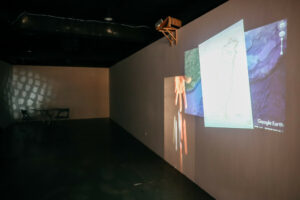
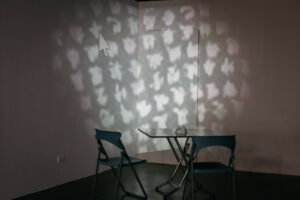
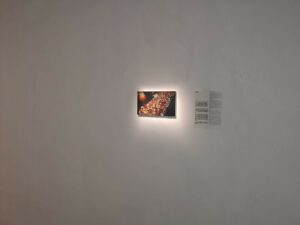
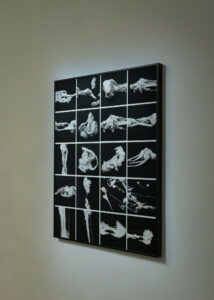
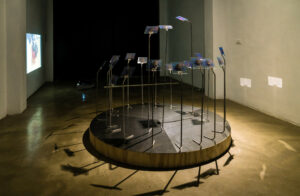
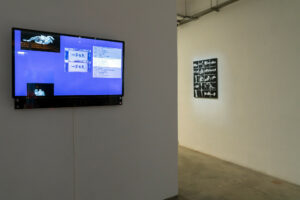
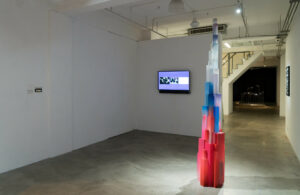
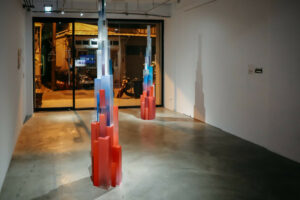
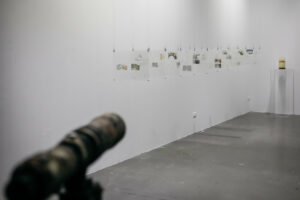
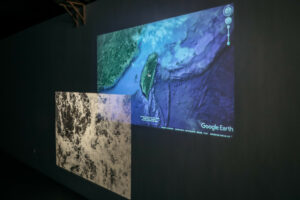
Null State
co-curate with Sean Wang, artists: Ni Hao, Rosalie Yu, Yo Yang, Hao Li, Murphy Hsu, Lee Cheng-Han
2018.11.17-12.23, Absolute Art Space and Fotoaura Institute of Photography, Tainan
What is the subject of Taiwan?
We need to embark on the concept of subject. To begin with René Descartes and his idea of subject and object,the world is divided into two parts: what we know to be real with the subject confirmed by our knowledge, and another part which is outside of the subject where the reality of the object is nowhere to be confirmed. This philosophical debate has later expanded into other fields outside of the academia. People started to make the analogy of describing a nation or a culture as an entity similar to a person. When people say: “Taiwan has no subjectivity”, this implies the island is like a subject that lost its agency and the meaning of its very own existence.However, this concept is later reexamined by the anti-modernism movement in the 1960s. Since then, Structuralism, Deconstructivism, and Post-modernism all strives to eliminate the notion of fundamental and central subjectivity in existence.
What is the relationship between the notion of subject and photography? In Walter Benjamin’s essay The Work of Art in the Age of Mechanical Reproduction, he discussed photography as a new technology that challenges the classical idea of art that was anchored in the presence of aura. The later tries hard to represent the wholeness of an object through images, while the former liberates art from this classical mission. This strand of thought resulted in two types of influences on the issue of subjectivity: firstly, the subject of art now transfers from object itself, to focus on the technology of photography. Secondly, the link between photography and ‘being present’ is subsequently loosened by such new proposition, as photos now no longer represent a subject, nor do they present a tool for connecting to episodes in the moment. Popular doubts toward a singular subjectivity in post-modern photography have become ever stronger, where Martha Rosler fundamentally denies the possibility of documentary photography to present objects. Under this later context, subjectivity is converted into a hybridized and limited way of seeing.
In contemporary photography, few artists hold the belief that photograph is capable of mechanically representing a subject. Despite the fact that photography has been introduced to many fields and archival works, in the hope of excavating the cultural subjectivity of Taiwan, this methodology is slightly different from classical anthropology that utilizes photographs to document the object of their scientific pursuit. This new approach, to a greater degree, makes photography a contested field, where the power struggles between an individual and the society are in mutual effect. That being said, the narrative of using photography as a means to “excavate”, “connect”, “analogize” the culture of Taiwan is still very much in full swing. In other words, Taiwan’s subjectivity is an existence that requires observation in silence and photography becomes the means to discover Taiwan and a way to further accumulate the culture of Taiwan.
We took another approach for our exhibition. We subverted the method where people believed content can be discovered through creative form. Instead we ask: if we start our journey from Taiwan, what kind of creation and form can it enable? On the logistical side, we place more emphasis on to what degree Taiwan and its subjectivity are influenced by technical dominance and construction, rather than examining the cultural subjectivity of Taiwan through imageries. Subjectivity in this attempt is in a placeholder that needs further definition, which is similar to where in a computing system the variables can be neither zero nor one, but “null” which situates in an undefined status and is allowed to be given a value only when it comes to actual computing.